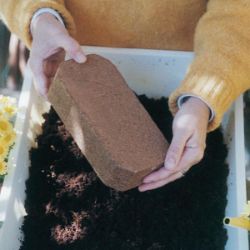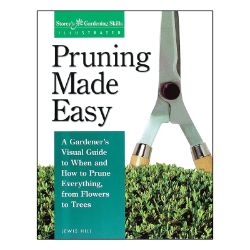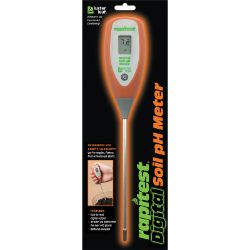Planting Olive Trees
Successfully establishing a young olive tree starts with your planting site and method. Once established, it needs little assistance to grow and bear fruit; but you’ll want to make sure you give your tree the right foundation.
NOTE: This is part 4 in a series of 11 articles. For a complete background on how to grow olive trees, we recommend starting from the beginning.
Before you plant, check your soil pH. Contact your local County Extension Office for information about soil testing in your area, or purchase one of our digital meters for quick and accurate results. Olive trees need a pH level of 5.5 to 6.5. They grow well in almost any well-drained soil, but prefer deep, fertile soil with high moisture capacity.
Planting Site
- Choose a site that is protected from wind and freezing weather and receives plenty of sunlight.
- Olive trees don’t mind cooler temperatures, but they should not be allowed to experience freezing weather. If your outdoor temperatures do not support these requirements, your olive tree can be potted and moved indoors during the colder months. Overwinter your olive tree in a protected area where it is not exposed to freezing temperatures.
Planting Tips
- Olive trees need to receive at least 6 to 8 hours of sunlight. Full sun is ideal.
- Spacing should be about 10 feet apart.
- Dig the planting hole about the same size as the container.
- Untwist or cut any circling roots; otherwise, disturb the root ball as little as possible.
- Do not add soil mix, compost or fertilizer to the hole.
- Fill the hole with the original soil and water thoroughly.
- No pruning necessary at planting time.
Potting Your Olive Tree
- Potted trees should be planted at the same depth they are in the shipping pot.
- Choose a potting mix/medium rather than top soil to avoid any contaminants and avoid compacting around the roots within the container in the future.
- When planting in a container, the pot you choose needs to be large enough to accommodate the tree’s current root system with room to grow. Be sure the container you use has adequate drainage holes.
- In cool climates, keep protected until outdoor temperatures warm and the chance of frost is gone. Move the plant into a protected, sunny location, preferably with a southern exposure.
- Water as needed, when the potting mix in the container is dry to the touch an inch or so below the surface. Avoid overwatering and watering too frequently, as this creates an environment for root rot and other root-related issues.
- As your olive tree grows, you will be able to increase the pot size to allow for more room to grow. Restricting the roots in a smaller container may limit growth and fruit production.
- By your tree’s second summer, you can plant it in a larger container, usually 16-20 inches in diameter. Refreshing the soil every one to three years will give you the opportunity to replenish soil nutrients and encourage healthier growth in your olive tree.

















